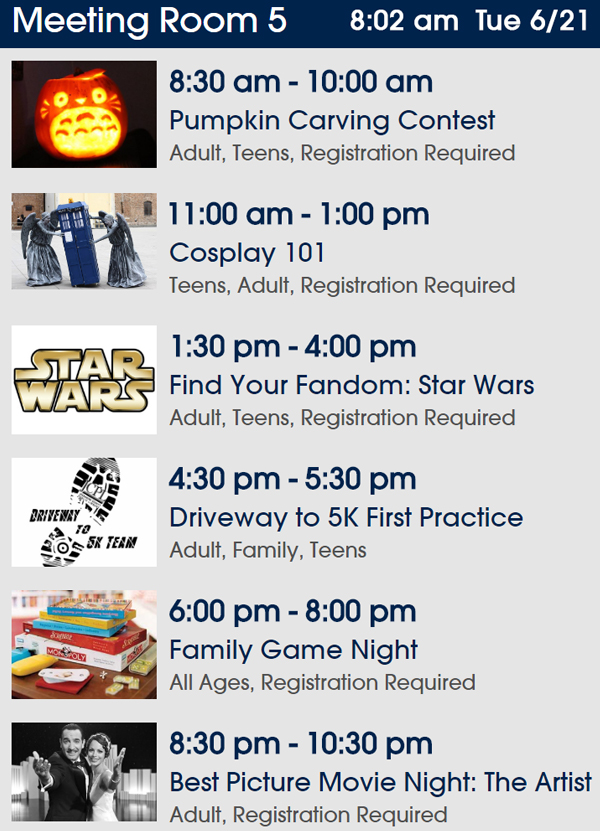Hammond Communications Group is recognized internationally for our award winning digital signage solutions.
We help our customers create, distribute and manage content.
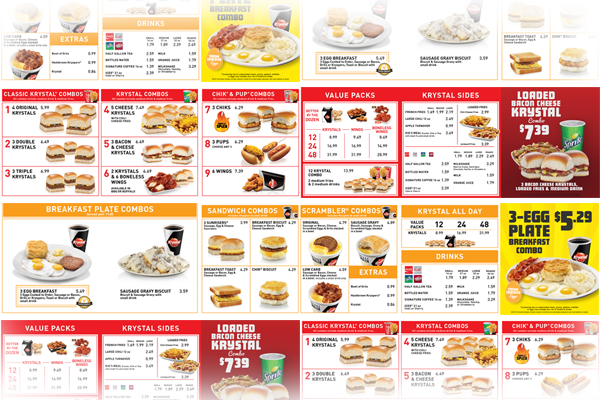
THE KRYSTAL COMPANY
ATLANTA, GA
QSR: Menu Board / POS Pricing Integration
The Krystal Company required a unified digital signage solution. Integrating with NCR’s POS-Lighthouse software, Hammond delivered a flexible menu board and appetite appeals digital signage solution. Hammond provided a variety of services including customized programming, which integrated the POS data with the Scala content management system. In addition to POS integration, the solution utilizes Metadata and Smart Playlists for different pricing tiers to effectively manage content on all menu boards. Each menu board features three 46″ LCDs and one, high performance media player.
OSRAM SYLVANIA INC.
DANVERS, MA
Manufacturing: Real-Time Production Line Reports
OSI selected Hammond to provide a corporate, internal communications digital signage solution. Hammond designed the system to include a “report” zone for displaying up-to-date production data relative to each of their many production lines. Multiple, internal OSI database platforms export data to XML files containing information for each line into a shared network folder. Scala scripts pull the data from the files and format the information and display the data in the appropriate real-time report for each specific production line.
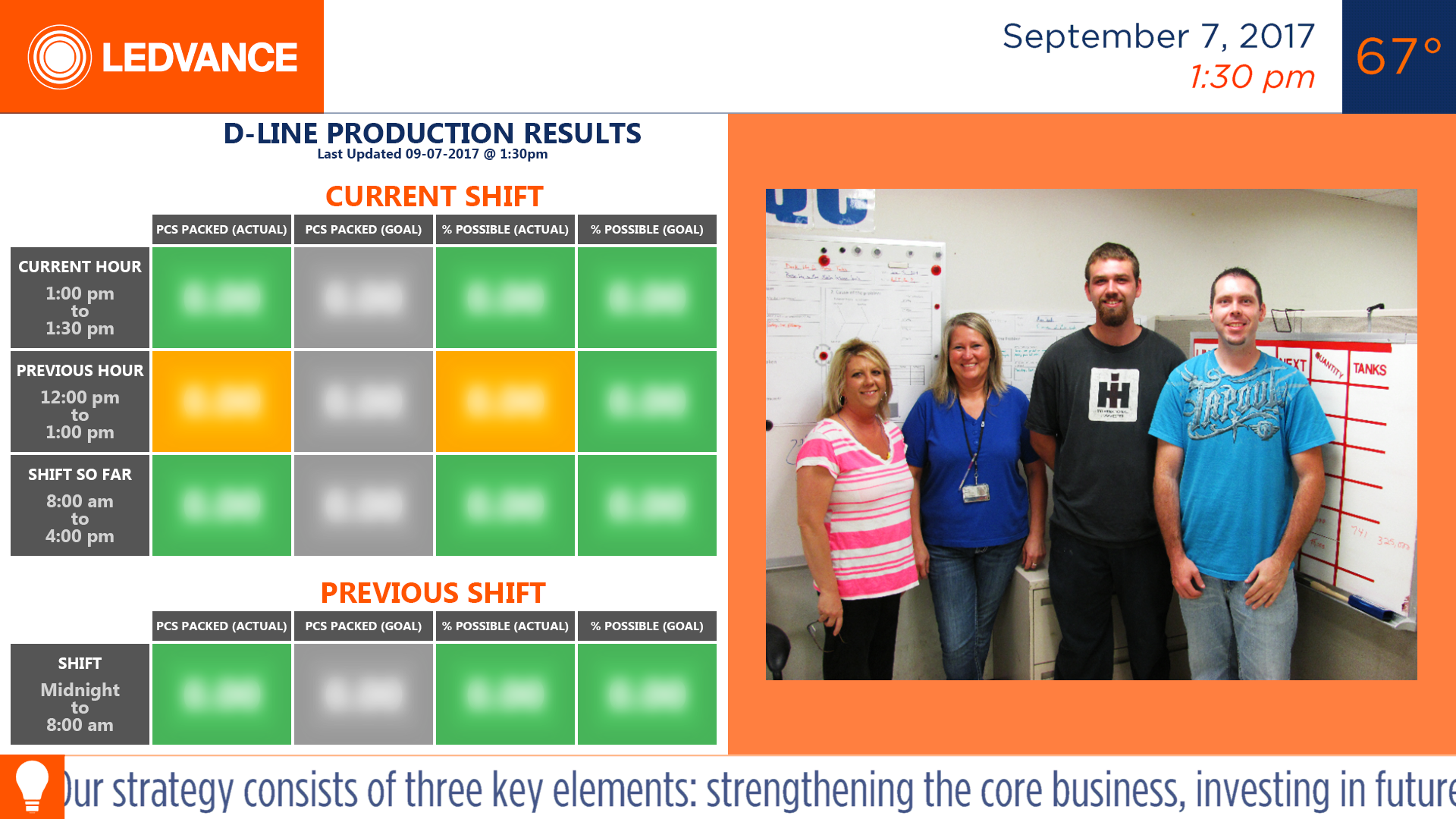
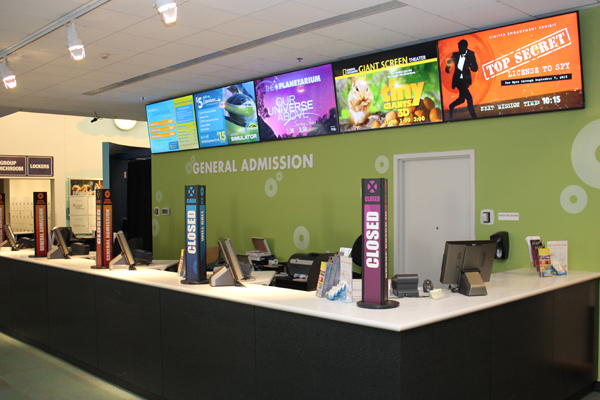

COSI CENTER OF SCIENCE AND INDUSTRY
COLUMBUS, OH
Museum: Reservation & Ticketing Software Integration
COSI was looking for a comprehensive digital signage / content management solution, including the integration of specific data within their existing theater and show ticketing system. Hammond developed a custom Scala script which executes Python code, which in-turn reads in data from COSI’s on-premises, third-party reservation and ticketing software (aka Outbound) and displays it on-screen. The data includes show titles, schedules, ticket prices, ticket inventory, show descriptions, and images. COSI uses Scala Designer to modify the Scala script with custom backgrounds, fonts, colors, etc. for specific shows and activities scheduled at the science center, and Hammond’s code does the rest, keeping the dynamic content up-to-date on-screen.
The digital signage solution allows COSI to display the show times for any activity in real time as patrons purchase tickets and the data is updated in the Outbound software at the point of sale. In addition, appropriate messages are shown when shows are sold out or are the last showing of the day, as well as when there are no more shows for a particular day.
CHRISTIANA CARE HEALTH SYSTEM
NEWARK, DE
Healthcare: Cafeteria Station Menu Boards
Building on the success of their initial External Communications department’s digital signage system, CCHS wanted to expand the network to include their Wilmington, DE cafeterias. CCHS’s existing process required Hammond to integrate a unique 21-day repeating menu schedule, accessible on individual unique food stations and master menu board units. Hammond’s solution expanded the Scala digital signage management software to include a password protected backend ASP.NET application.
The data is stored in a SQL Server database and is made available as JSON through a Web API to scripts running in Scala that pull the data into the digital menu boards. This makes the management of the menu boards a transparent and automated process for CCHS personnel. The solution automates the daily menu schedules, which increases administration efficiencies and improves the integrity of the information presented to their staff and customers.
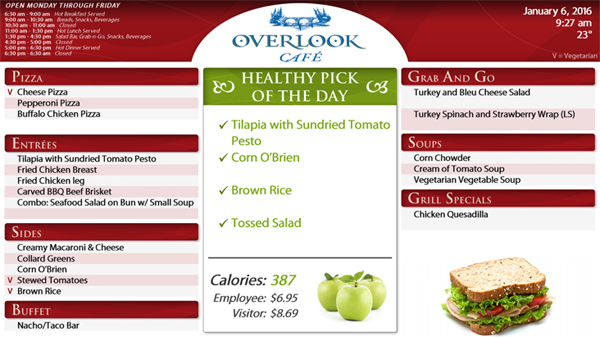
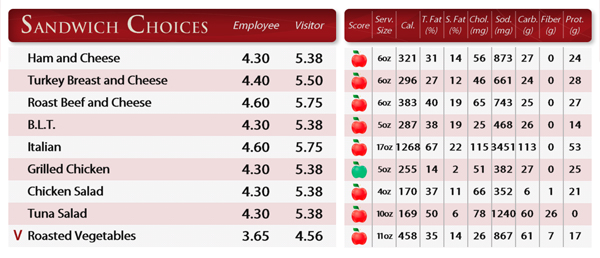
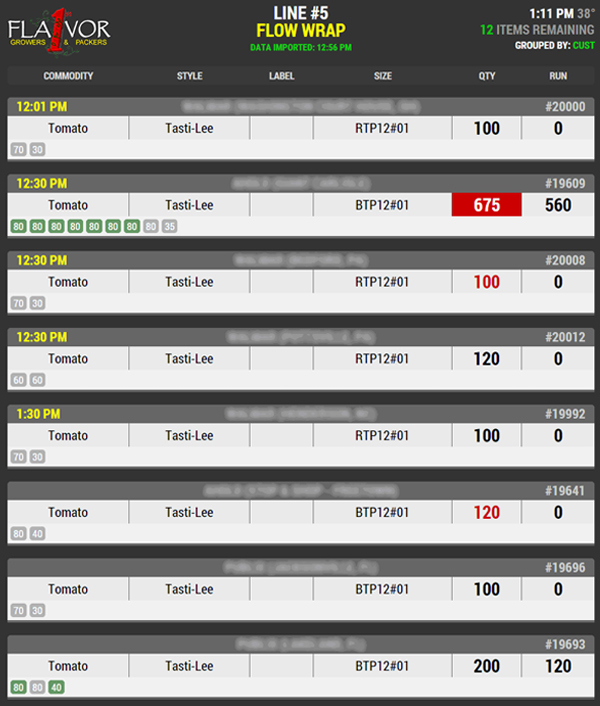
FLAVOR 1ST GROWERS & PACKERS
MILLS RIVER, NC
Manufacturing: Production Line Fulfilled Status
Flavor 1st, a produce packaging and distribution company in North Carolina selected Hammond to implement a digital signage solution to improve the management of their production lines, and leverage the daily order data they maintain in their internal accounting, inventory, and management software (aka Famous Software). Data from the software is exported to an XML file at regular intervals throughout each day. The data is transferred to a SQL Server database and exposed in JSON format via a Web API to a rich-client AngularJS application running in a browser at each production line. All of the production lines have a small form factor PC driving a 55″ display in portrait position showing line workers the food items to be packed on pallets for the day sorted by scheduled loading time and grouped by customer.
The application tracks when order quantities change and highlights them on screen so workers are aware of the changes. Each line also uses an existing PC or tablet to access an administrative view of the application that allows line managers to manage the production run of the food items and track pallets as orders are fulfilled. Using ASP.NET SignalR, a real-time, two-way communication link exists between all devices connected to the application allowing for a responsive and virtually delay-free user experience.
JESSAMINE COUNTY PUBLIC LIBRARY
NICHOLASVILLE, KY
Library: Meeting Room Schedule
In addition to a 3×3 video wall and multiple digital signage LCD units installed throughout the newly renovated Jessamine County Public Library, Hammond also delivered eight (8) Android all-in-one media players mounted outside the door of each meeting room, which are controlled by their new Scala Digital Signage system. In addition to the date and time, each screen displays that room’s schedule for the current day. The displays are updated in real-time, and as events occur throughout each day, they are automatically removed from the displays based on their end time, which keeps the schedule “clutter-free.”
The room schedule is implemented as a custom, Hammond-developed Scala HTML widget built with AngularJS that includes the room name, date/time, and a list of today’s events for that room. The same widget, based on the same code is leveraged and used for each room and utilizes Scala MetaData to determine the room number, which allows JCPL to control the room name and the events shown at each room, especially in cases where multiple adjacent rooms are combined for larger events.
Initially, Hammond considered using Google calendar to manage the events and the calendar API to integrate the data, but JCPL was already using a third-party library booking service, Evanced, to manage upcoming events on their website. After discovering that Evanced provides a customizable XML feed for the existing event data, it became the obvious choice for populating the room schedule displays.
In addition, JCPL wanted a “master” listing of all events for the current day, which Hammond provided by modifying the individual room code to include all rooms. Hammond installed 55” LCDs near the main entrance ways of the library which display the JCPL logo, date/time and temperature, and list that day’s programs.
